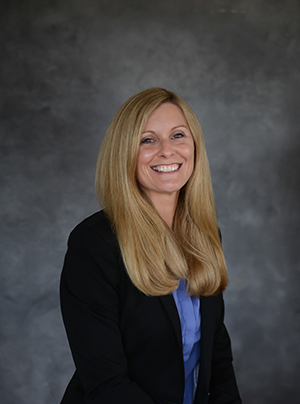Tricia Tatalick Gardner: Paying Forward the Construction Industry Legacy
Working as a construction Project Manager entails carrying a heavy load. The responsibilities involve overseeing the entire project. This requires budgeting, scheduling, quality control and serving as the liaison between the contractors and the owners.
Even with this schedule at the Panzica Construction Company, Tricia Tatalick Gardner finds time to volunteer as a Co-Lead Mentor in the ACE Mentor Program. Her first year in 2017 was at Max Hayes and now New Tech East. Having been around architecture, construction and engineering all her life, she decided to focus on construction management while at the University of Cincinnati.
When she’s not volunteering, Gardner enjoys the Cleveland Pops Orchestra and theater productions at Playhouse Square. She’s a member of Women for Economic Leadership and Development (WELD) and the Construction Manager’s Association of America, Ohio Chapter, as well as Geauga County’s Red Key Society.

Describe your ACE experience.
It has been incredible. It is such a gift to be able to share what I love with students who have an interest in learning. I found that the more options and opportunities to which we can expose people, the better choices they can make in choosing a career they will love.
I was lucky in that I knew I loved this industry at a young age. I was exposed to it by my father, uncle, and grandfather. To pass along what I have learned and show them there are so many different avenues, is priceless.
How has the program helped you?
This program has helped me to grow and connect with a younger generation. It has helped me to dive into what I have learned over the years and organize it in such a way that I can share it. Putting it into simple steps helps others grow their experiences and critical thinking skills. It is exciting to me to provide hope to students, who otherwise may not have exposure to our industry.
What advice do you have for others interested in participating in the program?
Be yourself. Have a good time with the students and just talk to them. Teach them. Experience the project with them instead of teaching over them.
Tell about your memorable student experiences.
My first year’s theme was ‘Healthy Connections.’ To explore different aspects of healthy connections and develop teamwork, we took a field trip to an obstacle course. We gave each of the students the choice to opt out of three events for any reason. In the beginning, there were some who had difficulty and the other students did not assist in any way.
I had a quick conversation with them explaining that it was a team event and they were to support each other. After that, the following events had students cheering for and helping each other through the obstacles. Not a single student opted out of any event. It was exciting to see them working as a team. It proved to be a good building block for the remaining session.
Seeing our students present their final project on what they learned filled me with pride. They projected their voices, talked clearly, and explained the reasons for their selection and design. It was heartbreaking to see their disappointment when they didn’t win, but it left us with a teaching moment. They were hurt but determined to do even better the next year. That is a win for all of us!
Describe the importance of diversity and inclusion in the construction industry.
The construction industry is dynamic. New techniques and technologies are developed daily. Jobsites change condition on an hourly basis. We constantly build teams and solve problems. There are usually multiple solutions to a problem, but one is usually best fit for a certain type of project. Determining which one is best is a collaborative effort.
It is imperative that people with various types of backgrounds participate on all different levels. This provides the industry with new ways of looking at problems and providing solutions. New techniques that are developed come from different experiences and the creativity develops because of those experiences.
Working together as a team shows that one individual cannot do it alone. No one individual or situation is perfect. However, it proves if we all work together, differences aside, and find common ground (getting the project completed in the best way for the team), we can accomplish tasks that may at times seem impossible.
Describe your involvement in the Construction Employers Association (CEA).
My OSHA 30 certification was through a CEA sponsored class. I participated in the holiday drive, and of course, I have enjoyed mentoring students in the ACE Mentor Program!
